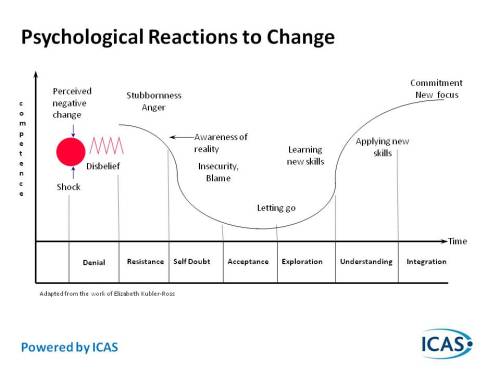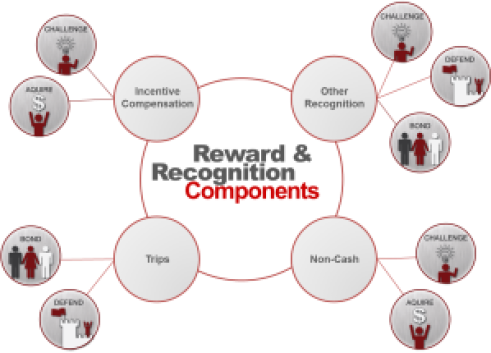Behavioral based incentives (incentives that recognize behaviors and actions instead of results) can be very powerful motivators inside of a company’s overall reward framework. In many instances, behavioral based incentives are the only way that an organization can recognize employees for work that is vital to their success. This includes times when outcomes cannot be effectively measured, where outcomes are not immediately contingent on individual contributions, and where there may be ethical or legal components that prohibit outcome based rewards. Research also suggests that behavior based incentives can be advantageous to the organization in a number of ways including but not limited to: the ability to reward long-term behaviors that will not have a short-term payoff, improve fairness of recognition due to inequities in the market place, provide more focus on soft-skills necessary to long-term success, and help drive non-sales activities that are desirable by the organization (Anderson & Oliver, 1987 & 1994; Baker, Jensen and Murphy, 2012).
While behavior based incentives can be very powerful motivators, they also can have a negative impact on overall moral and motivation if not properly implemented. There are a number of potential pitfalls with how
Some Potential Roadblocks:
Ambiguous measurement / Perception of fairness: Behavior based rewards often have ambiguous qualitative rating processes which can result in different interpretations of the same behavior or action. In other words, one person might feel that they are exhibiting exactly the right behaviors while another would view those same behaviors as poor or unsatisfactory. This dual interpretation can lead to individuals feeling as if they are being unfairly measured. Research by Meyer has shown that 58 percent of employees rated their own performance as being in the top 10 percent of their peers and that 81 percent rated themselves in the top 20 percent while less than 2% of the people rated themselves below the median.
Lack of Trust: Individuals often state a lack of trust in both the organization and in their manager to effectively be able to assess their performance. Often this is related to the perception of fairness listed above, but many times this is also the result of lack of understanding on the incentive process.
Short time horizon vs long term impact: Behavior based incentives are powerful motivators, in part, because individuals can be rewarded shortly after they exhibit the desired behavior, thus reinforcing that behavior. This short-term focus however, does not always correlate to long-term success. Thus behaviors often revert back to the status quo once the incentive is removed.
Gaming the system: as in any incentive scheme, behavior based incentives can be gamed. Participants might act differently when they know they are being observed by their manager or otherwise try to create a false impression of their behaviors.
Some Best Practices:
Specificity: There needs to be a very clear definition of what is being measured and how it is being rated. This specificity needs to be clearly understood by both the participant and the manager. While this does not imply that there cannot be qualitative judgments made about an individual’s behavior, it does mean that the manner in which those judgments are determined needs to be transparent and agreed to in advance. This requires significant investment prior to implementation to fully identify, define, communicate, train, and create tools to ensure full understanding.
Leaders should ensure that they have fully invested in the measurement process and communication of the behavior measures. This includes:
- Clear definitions around behavior expectations
- Behavior examples that are used as illustrations for expected behaviors
- Training campaign for managers on both “how to” measure as well as “how to” communicate their rating (provide feedback)
- Communication campaign that clearly and succinctly highlights expectations and outcomes
If there are quantifiable elements (that are relevant and valid) that can be included as part of the overall measurement process, these should be included – even if they are used as back-up or reference components and not directly tied to the payout.
Measurement process calibrated across managers: Key to success is the consistent rating of individuals across managers. Top organizations ensure that there is training on how to measure, but also do periodic check-ins to ensure that the measurement process is calibrated (i.e., that managers are giving similar ratings for similar behaviors). Note, this is not a calibration of ratings at the end of a quarter or period, but a review of processes and feedback for the managers for how they can be consistent to the norm.
Milestone check-ins with long-term bonuses: Behavioral economics shows that individuals place higher value on relatively smaller rewards that are achieved in near term over larger rewards that require longer time horizons. Motivational research shows that near term rewards can drive quick uptake on behaviors, but does not correlate to long term behavioral change. However, incentives with longer time horizons have been shown to drive more long term behavior adoption. Combining these factors, best companies have used a process whereby they have a long-term bonus kicker with short-term milestone check-ins. Often, short-term check-ins are done as on-the-spot rewards given by managers from specific discretionary budgets for this purpose.







